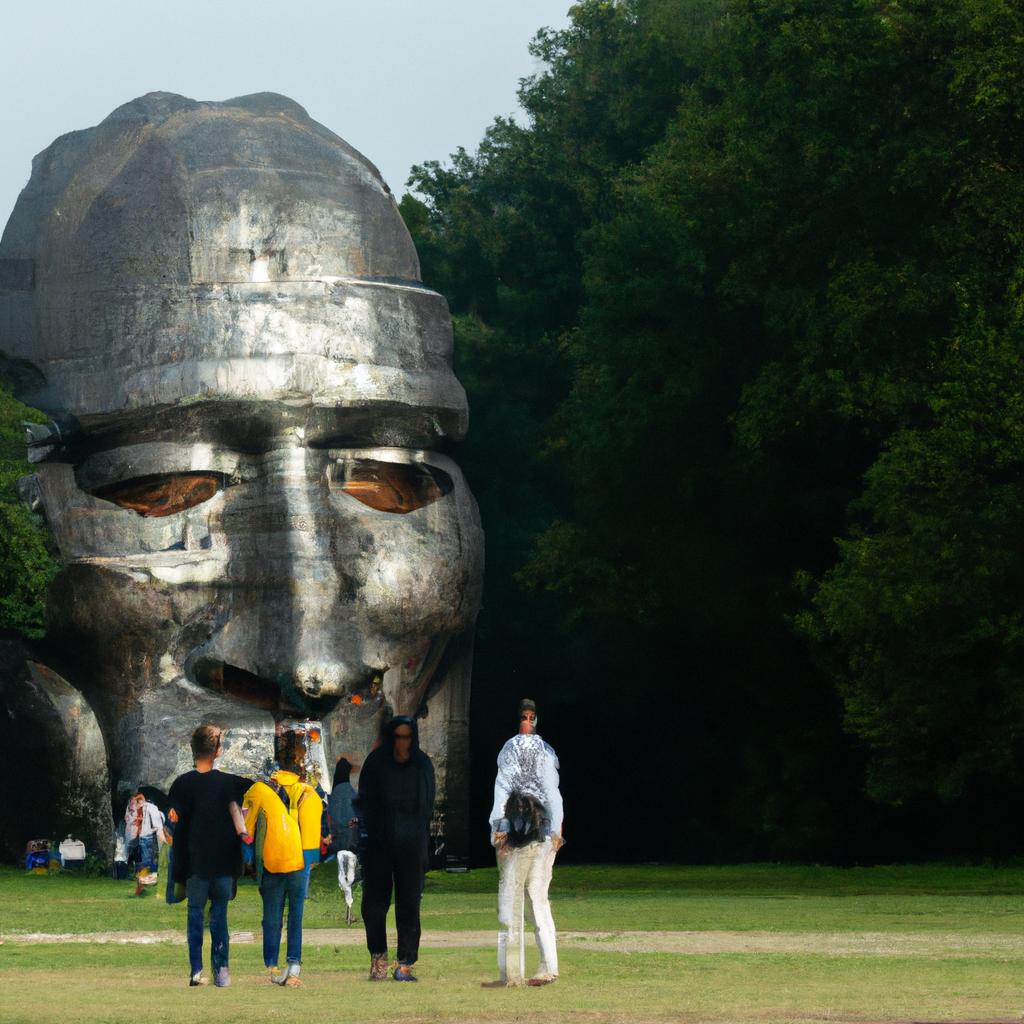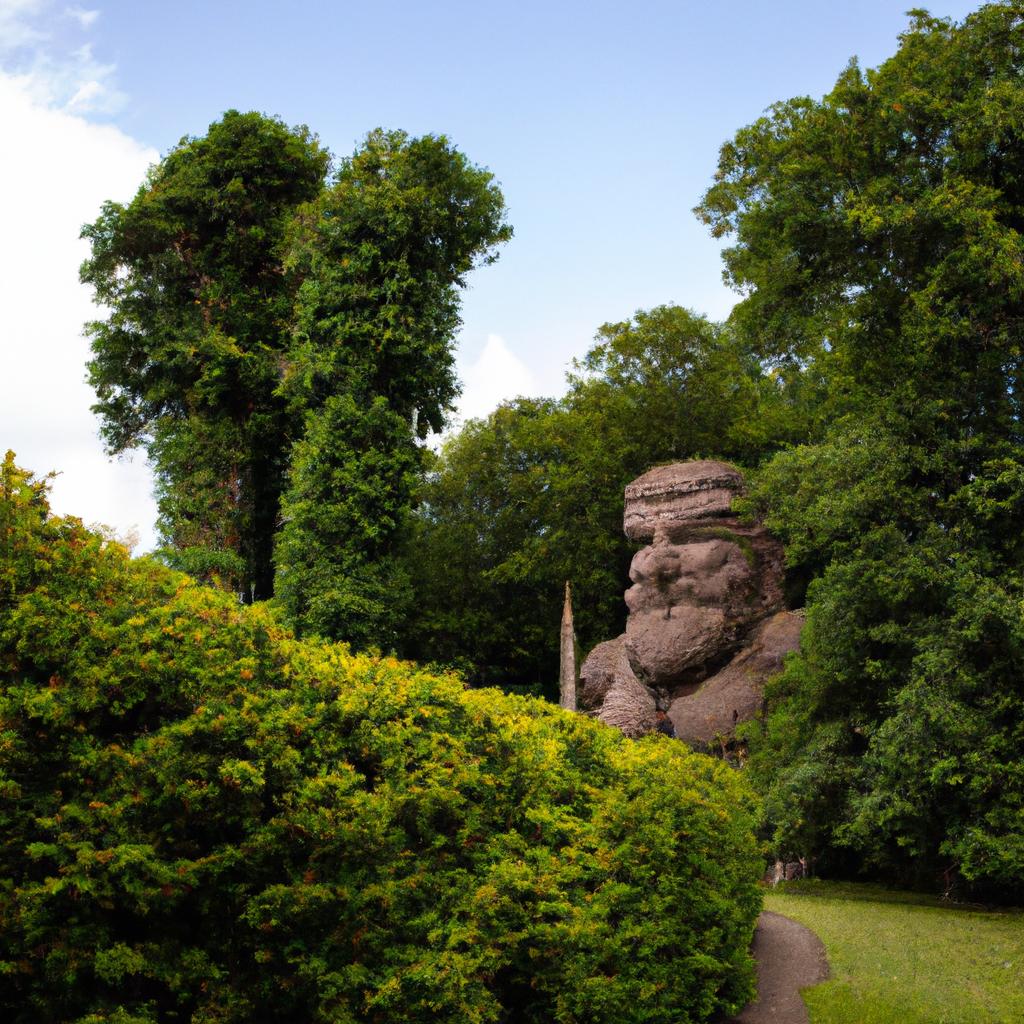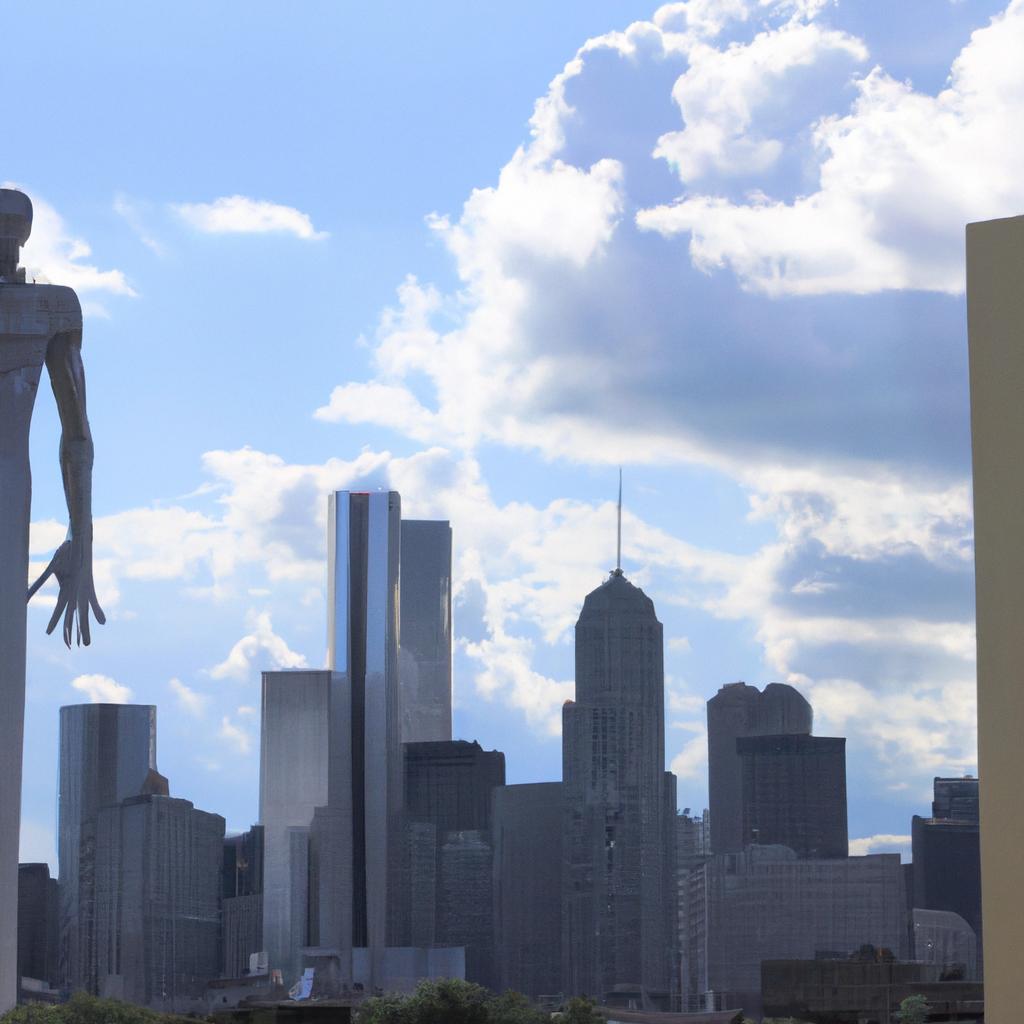If you’re an art enthusiast, chances are you’ve encountered a giant sculpture at some point in your life. These monumental artworks possess an awe-inspiring grandeur, leaving an indelible mark on anyone who beholds them. But what is it about giant sculptures that renders them so significant in the realm of art?
Giant sculptures are a form of public art that has thrived for centuries. Typically located in public spaces like parks, squares, and museums, these sculptures are designed to be experienced by the public. Crafted from a diverse array of materials, including stone, metal, and even recycled materials, giant sculptures serve multiple purposes.
The significance of giant sculptures within the art world cannot be overstated. They are often employed to commemorate pivotal events or individuals, while also acting as potent conveyors of social or political messages. Moreover, giant sculptures serve as wellsprings of inspiration for artists from all walks of life.
So, let’s embark on an expedition to unravel the magnificence of these colossal artworks, exploring their rich history, the materials and techniques used to create them, and their symbolic import.
A Glimpse into the Historical Tapestry of Giant Sculptures

The intricate details of the sculpture are a testament to the artist’s skill
The saga of giant sculptures spans across centuries, with its origins traceable to ancient Egypt. In this ancient civilization, colossal statues of pharaohs were erected to commemorate their reigns. Ancient Greece witnessed the creation of giant sculptures as offerings to honor gods and goddesses, meticulously crafted from marble and depicting the deities in various poses.
The Renaissance period heralded the emergence of giant sculptures as public art, with Michelangelo’s David serving as an exemplar. Standing over 17 feet tall, this masterpiece was initially envisioned for the rooftop of the Florence Cathedral.
The 20th century bore witness to the rise of giant sculptures crafted from non-traditional materials, such as metal and plastic. These sculptures often sought to communicate profound social or political narratives. Claes Oldenburg’s “Giant Soft Fan” stands as a prime example, conceived in 1967 as an embodiment of consumer culture’s implications.
The influences behind these colossal creations are as diverse as the sculptures themselves. Artists draw inspiration from nature, historical events, or religious figures. Their significance to the artist and the community cannot be overstated. They become a source of pride and inspiration, often transforming into iconic landmarks synonymous with the cities or towns they adorn.
In the subsequent section, we’ll delve deeper into the materials, construction techniques, and the challenges faced during the creation of these magnificent sculptures.
Design and Construction: The Craftsmanship Behind Giant Sculptures

The park is abuzz with people enjoying the beauty of the giant sculpture
Materials Used in Creating the Sculpture
Materials play a pivotal role in the creation of a giant sculpture. The chosen materials must withstand the test of time and environmental elements. Stone, metal, and fiberglass are commonly employed. Stone is favored for its durability, while metal facilitates the creation of intricate designs. For large sculptures, fiberglass offers a lightweight and cost-effective alternative.
Techniques and Processes Involved in the Construction
Crafting a giant sculpture demands mastery of complex techniques. The specific techniques utilized hinge on the materials employed and the sculpture’s size. For instance, sculptors may wield chisels to carve stone or employ welding techniques when working with metal. Molding is another common method used when a sculpture’s size surpasses a single piece.
Challenges abound throughout the creation process, particularly due to the monumental scale of these sculptures. Transporting and installing such colossal artworks presents logistical hurdles. Artists must also grapple with imperfections inherent in certain materials, such as irregularities in stone. Weather poses another obstacle, as exposure to the elements can inflict damage over time. These challenges, however, are outweighed by the rewarding and fulfilling experience of creating a giant sculpture—a breathtaking work of art to be cherished by the public for years to come.
Now, let’s dive into the symbolic interpretations and cultural significance embodied by giant sculptures.
Symbolism and Meaning: Unraveling the Tapestry of Giant Sculptures

The sculpture comes alive at night with its stunning lighting
Giant sculptures transcend mere artistic splendor; they are imbued with profound symbolism and meaning, imparting vital messages to all who encounter them. In this section, we explore the diverse interpretations of these colossal creations and their historical and cultural import.
Interpretations of the Sculpture
One of the most captivating aspects of giant sculptures lies in their ability to evoke varied interpretations. A sculpture representing a person or event can be seen as a celebration by some, while others perceive it as a critique or commentary. Abstract sculptures representing concepts like love or freedom elicit an array of interpretations, influenced by individual perspectives.
Cultural and Historical Significance of the Sculpture
Giant sculptures assume significant cultural and historical roles. Depicting historical figures serves as a reminder of their contributions to society. Sculptures preserving cultural traditions safeguard these customs, fostering cultural continuity for future generations.
Furthermore, giant sculptures commemorate crucial events or historical moments. Memorials representing tragic events such as wars or natural disasters pay tribute to those who were affected.
Impact of the Sculpture on Society and the Art World
The impact of giant sculptures reverberates throughout society and the art world. They inspire artists and reshape artistic perspectives. Moreover, these sculptures captivate tourists, drawing them to cities and towns, thereby bolstering local economies.
In conclusion, giant sculptures transcend their awe-inspiring presence. They convey vital messages, possess cultural and historical resonance, and exert considerable influence on society and the world of art.
Touring and Exhibition: Bringing Giant Sculptures to the World

The sculpture is not only beautiful but also an eco-friendly masterpiece
Giant sculptures are not confined to a single location; they are designed to traverse the world and be exhibited in diverse contexts. Touring and exhibiting these sculptures play an indispensable role in bringing art to a broader audience and fostering cultural exchange.
Locations where the sculpture has been exhibited
Giant sculptures find their way to various global destinations, gracing public parks, museums, and galleries. Some renowned exhibition locations include the Louvre Museum in Paris, the National Gallery of Art in Washington, D.C., and the Guggenheim Museum in New York.
Reactions and responses of viewers to the sculpture
Viewers’ reactions to giant sculptures span a wide spectrum, influenced by the sculpture’s size, location, and message. Some stand awestruck by their grandeur, while others marvel at the intricate details and design. Cultural and social backgrounds shape individual interpretations of these sculptures.
Importance of touring and exhibiting the sculpture
Touring and exhibiting giant sculptures promote cultural exchange, stimulate economic growth, and enable diverse audiences to appreciate these artistic masterpieces. These exhibitions allow people from different corners of the globe to admire the artwork, while fostering social and cultural dialogue.
In conclusion, touring and exhibiting giant sculptures are pivotal in nurturing cultural exchange, stimulating economic growth, and extending the reach of artwork to a broader audience. Such endeavors not only facilitate the appreciation of art but also foster cultural and social cohesion.
Final Thoughts: Embracing the Wonders of Giant Sculptures

The sculpture blends seamlessly with the natural surroundings
In conclusion, giant sculptures embody a remarkable form of public art that has captivated audiences for centuries. Through their sheer size and grandeur, these sculptures inspire, celebrate, and amplify profound messages.
As we have ventured through this article, we have captured glimpses of the rich history, intricate design, and profound symbolism encapsulated in giant sculptures. Moreover, we have recognized the pivotal role touring and exhibiting these sculptures play in fostering cultural exchange, economic growth, and communal spirit.
At TooLacks, we firmly believe in the transformative power of art to enrich our lives. We encourage you to take the time to appreciate the beauty and significance of giant sculptures and to support public art initiatives in your community.
So, pause and savor the magnificence of these incredible artworks when you next encounter a giant sculpture. Who knows, it may ignite a spark of creativity within you to create something equally extraordinary.



